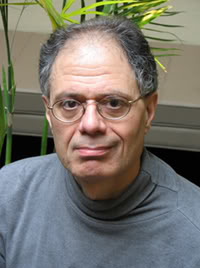There’s far too much good cheer around at present, even if it is the holiday season and the Red Sox have finally won a World Series. In Bertolt Brecht’s immortal words: “The cheerful man has not yet heard the terrible news.” So here is a column about two brilliantly downbeat books that will dampen your spirits and chill your goodwill toward men, though at the same time they will induce a sober intellectual exaltation.
The terrible news is that the horrors of the twentieth century – mass deportations, politically-caused famines, ethnic cleansing, mechanized war, concentration camps, death factories – may not have been an accident. Most of us assume (it helps us stay sane) that this violence was a throwback, an eruption of the primitive and archaic into the present. It must, we say, represent a failure to have assimilated the civilizing values of modernity: scientific rationality and political equality.
No so fast, argues Michael Mann, a historical sociologist at UCLA. Mann is embarked on an ambitious, widely praised multi-volume study, “The Sources of Social Power.” In the last two years, the prolific scholar has spun off several books from this larger project, on imperialism, on fascism, and now on ethnic cleansing. The latter, he writes, “belongs to our civilization and to us … [it] is modern, because it is the dark side of democracy.”
Democracy means “rule by the people.” Who are the people? For Americans, this is an easy question: we’re all “the people.” Since everyone’s forebears came here from somewhere else, none of us is more American than any other. Elsewhere, as Mann points out, it’s not so simple. There may well be more than one people; that is, more than one group whose members are not happily assimilated but instead are intensely conscious of sharing “a name, a myth of descent, a sense of history, a culture, a connection to a specific territory, and a sense of solidarity.” In some countries, these ethnic groups coexist peacefully; in others – most recently, Yugoslavia and Rwanda – tensions escalate to murderous violence.
Mann has a theory about what produces such violence. It is not the absence of democracy. On the contrary, he claims, monarchical, aristocratic, and even totalitarian societies rarely experience ethnic cleansing (though there may be plenty of violence against domestic or external enemies for other reasons). It is, in a sense, democratization itself that incites, or at least enables, ethnic conflict. When ordinary people emerge at last onto the historical stage, their first alliances are usually with people who look most like themselves. The resulting ethnic-group competition trumps class and interest-group struggles, taking on a life of its own. When it becomes a contest for sovereignty – for control of the state – compromise may be difficult or impossible, especially if outsiders help one side or the other. Often, cleansing ensues.
Though I have reservations about Mann’s theory, it is obviously important. And his case studies, which make up most of the book, are well narrated, richly detailed, and grimly fascinating. As a history of the dark side of the 20th century, “The Dark Side of Democracy” is hard to beat.
Nevertheless, “Barbed Wire” beats it. Reviel Netz is a philosopher of science who approaches the soul-shrivelling evils of the 20th century (and the 19th) with scientific curiosity and (apparent) philosophical detachment. “Define,” he instructs us, “on the two-dimensional surface of the earth, lines across which motion is to be prevented, and you have one of the key themes of history.” When I encountered this terse, teasing first sentence, I could not guess how much dreadful history it would illuminate.
What is modernity? Is it fundamentally good? One can answer any large historical question only by selecting a point of view. Netz selects the control of motion, specifically by means of barbed wire. It was invented after the Civil War to make possible the massive and rapid colonization of the Great Plains. Northeastern banks required a predictable return on investment, so the unpredictable bison had to go. The more controllable – by barbed wire – cow was introduced and became highly profitable.
The British first used barbed wire on humans, in the Boer War. In World War I millions of tons of it were used to protect trenches. After the war, it became an essential technique in the most ambitious project of control ever devised, the concentration camp.
One way of looking at modernity, Netz subtly and surprisingly shows us, is as the perfection of control, first over nature and then over society. “In the premodern world, control reached to points and the lines connecting them; there simply was not enough prevention of motion to go around to cover an entire plane and bring it all under control. In the modern world, this changed, and the topology was inverted: control reached everywhere, and only isolated points were left for motion, that is, not controlled from a center.” Seen from inside the barbed wire, this is a sinister progression.
Buy these two books, but don’t open them right away. Put them aside until after the holidays. And then, sometime in the depths of winter, when you are ready to peer into the abyss and learn what terrors of history lie in the background of our smiling urban festivities – read them. You’ll be less cheerful for a while but permanently wiser.
[END]
